-
Review Article
- High-Throughput Imaging for Precision Breeding and Orphan Crop
- Gyung Deok Han, Bo Hwan Kim, Wook Kim, Yong Suk Chung
- Efficient phenotyping is critical for linking genotype to phenotype in modern crop breeding. However, traditional phenotyping methods are labor-intensive, destructive, and time-consuming, …
- Efficient phenotyping is critical for linking genotype to phenotype in modern crop breeding. However, traditional phenotyping methods are labor-intensive, destructive, and time-consuming, limiting their scalability and precision. Recent advances in high-throughput phenotyping (HTP), particularly image-based approaches using ground sensors, UAVs, and satellites, have enabled non-invasive, large-scale measurement of complex traits with enhanced speed and accuracy. These innovations have significantly improved breeding efficiency in both major and underutilized crops. To fully realize the potential of HTP, the standardization of trait descriptors and data formats is essential. It ensures interoperability across studies and supports the development of robust, data-driven crop improvement strategies. Collaborative efforts at national and international levels are increasingly promoting this shift toward harmonized phenotypic data practices. Image-based HTP has now been applied across a wide range of crop species, allowing researchers to evaluate traits and prioritize breeding targets more effectively and at greater scale. Despite its promise, challenges remain including high infrastructure costs, difficulties in integrating heterogeneous sensor data, and the absence of widely adopted standards for data sharing. Addressing these barriers will require broader implementation of the FAIR data principles: Findable, Accessible, Interoperable, and Reusable. With such frameworks in place, standardized image-based phenotyping is poised to become a foundational tool for precision breeding and for building sustainable, resilient agricultural systems in the face of ongoing environmental change. - COLLAPSE
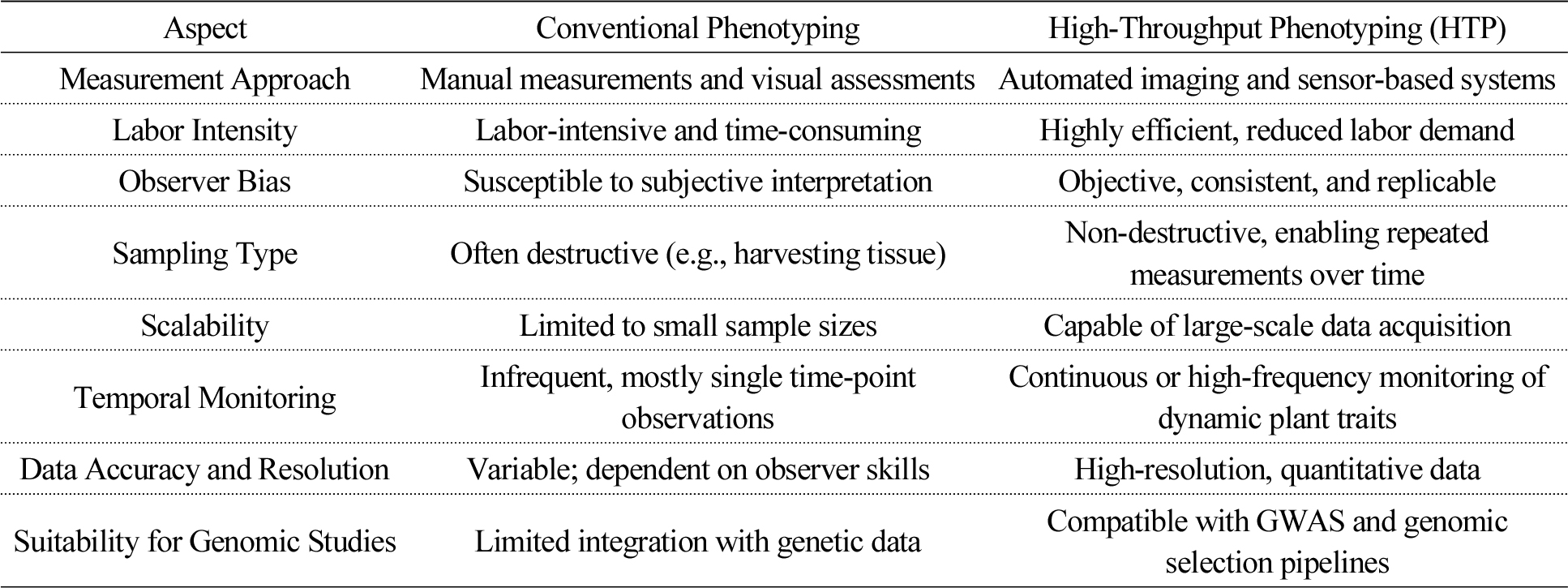
-
Research Article
- Marinification Progress and Phytoplankton Community Shifts in Yeongrang Lake: Spatiotemporal Dynamics and Ecological Transition Assessment
- Jungwon Park, Kangyeol Lee, Jaeyong Lee, Jaeseock Choi
- This study investigated the ecological transition of Yeongrang Lake from a lagoon to a fully marine ecosystem by analyzing the spatiotemporal dynamics …
- This study investigated the ecological transition of Yeongrang Lake from a lagoon to a fully marine ecosystem by analyzing the spatiotemporal dynamics of phytoplankton communities and the associated environmental changes. Comparative analysis with historical data revealed a 3.9 to 5.1°C increase in water temperature and complete salinization of the lake, primarily due to sustained seawater inflow interventions. These changes contributed to improved water quality, as indicated by reductions in total nitrogen (TN) and total phosphorus (TP) concentrations. Phytoplankton assemblages responded markedly to these shifts; over 95% of the identified species were marine, with diatoms and dinoflagellates dominating the community structure, whereas previously abundant cyanobacteria were nearly absent. Seasonal analyses revealed dynamic changes in dominant species, including several brackish and marine taxa known to potentially cause harmful algal blooms, suggesting an elevated risk of future red tide events. Although localized thermal effects were observed near the pontoon bridge, the limited survey duration underscores the need for long-term monitoring to fully assess these impacts. Overall, the combined environmental and biological evidence confirmed that Yeongrang Lake has undergone substantial ecological transformation into a marine water body. Continued systematic monitoring and targeted research are essential for managing this transition, mitigating potential ecological risks, and supporting the sustainable management of the lake ecosystem. - COLLAPSE
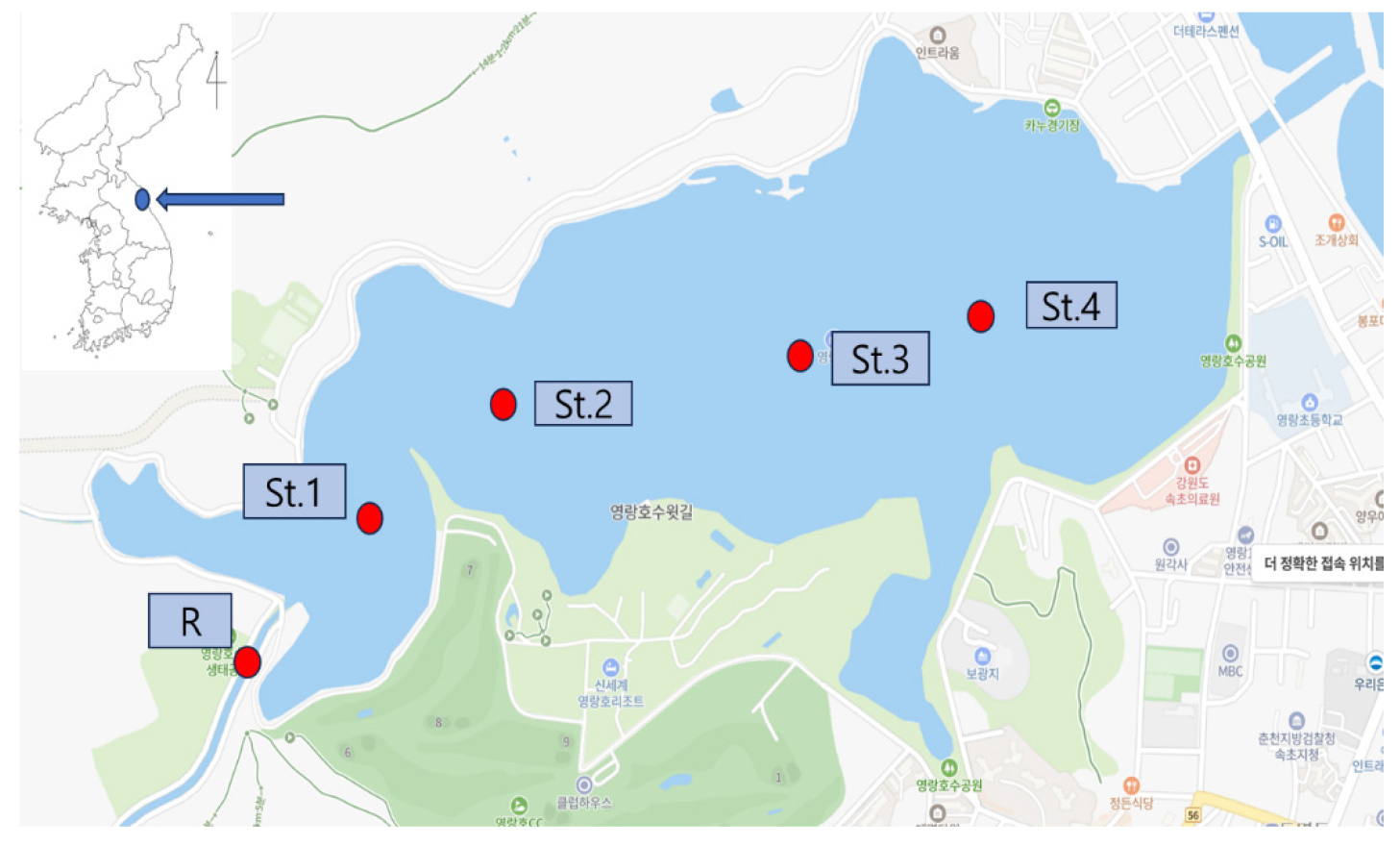
-
Research Article
- Habitat Characteristics and Growth Patterns of the Endangered Species Gobiobotia macrocephala Population in the Pyeongchanggang River, Yeongwol, Korea
- Seung-Chul Park, dou pyo Hong, Jae Hoon Kim, Jaeseock Choi
- This study comprehensively analyzed the characteristics of the Gobiobotia macrocephala (Endangered Species Category II) population in the Pyeongchanggang River, Yeongwol, with the …
- This study comprehensively analyzed the characteristics of the Gobiobotia macrocephala (Endangered Species Category II) population in the Pyeongchanggang River, Yeongwol, with the aim of securing ecological baseline data for the conservation of this species in river ecosystems threatened by anthropogenic disturbances. Our findings indicate that the Pyeongchanggang River provides a suitable habitat for G. macrocephala, characterized by a 7th-order stream with a wide channel and wet width, appropriate water depth, and a dominant substrate of large stones (boulders) and small stones (cobbles). Although the water quality was generally good, the high pH values observed at some stations highlighted the necessity for continuous monitoring. A total of 68 G. macrocephala individuals were identified, showing an increasing trend in abundance towards downstream stations. The absence of individuals in September was attributed to limited accessibility owing to high water levels following the rainy season. The mean total length and body weight were highest at St.1. The length-weight relationship (growth exponent of 3.36) and a positively sloped condition factor trend line clearly demonstrated the favorable growth and nutritional status of the Pyeongchanggang River G. macrocephala population. Age frequency distribution analysis revealed a diverse age structure, including age-0 to age-2+ individuals. The von Bertalanffy growth model (L∞ 149.5 mm, k -0.30) further confirmed the stable structure and high growth potential of this population. In conclusion, the G. macrocephala population in the Pyeongchanggang River is currently in relatively healthy and stable conditions, indicating that the physical riverine habitat positively influences the survival of this species. This study provides crucial baseline data for understanding the ecological characteristics and current status of G. macrocephala populations, and will be valuable for comparative studies in other regions, contributing significantly to conservation and restoration strategies for this endangered species. However, ongoing vigilance and management strategies are essential to address potential environmental threats, such as high pH values, and anthropogenic disturbances, such as temporary riverine access roads, to ensure the long-term stability and persistence of the G. macrocephala populations. - COLLAPSE

-
Research Article
- Impact of Market Opening on the Agricultural Income of Livestock Farmers
- Byoung Hoon Lee
- To analyze the effect of market opening on the agricultural income of livestock farms, this study evaluated livestock product prices, productivity, and …
- To analyze the effect of market opening on the agricultural income of livestock farms, this study evaluated livestock product prices, productivity, and input costs. Analysis of productivity changes following market opening, revealed that the increase in livestock product imports contributed to improvements in livestock agriculture productivity. Analysis of changes in agricultural income and income volatility for each major livestock breed that suffered direct or indirect damage from market opening showed that market opening negatively affected the agricultural income of most livestock species analyzed. Contrary to expectations, income volatility did not provide evidence of being affected by market opening. - COLLAPSE
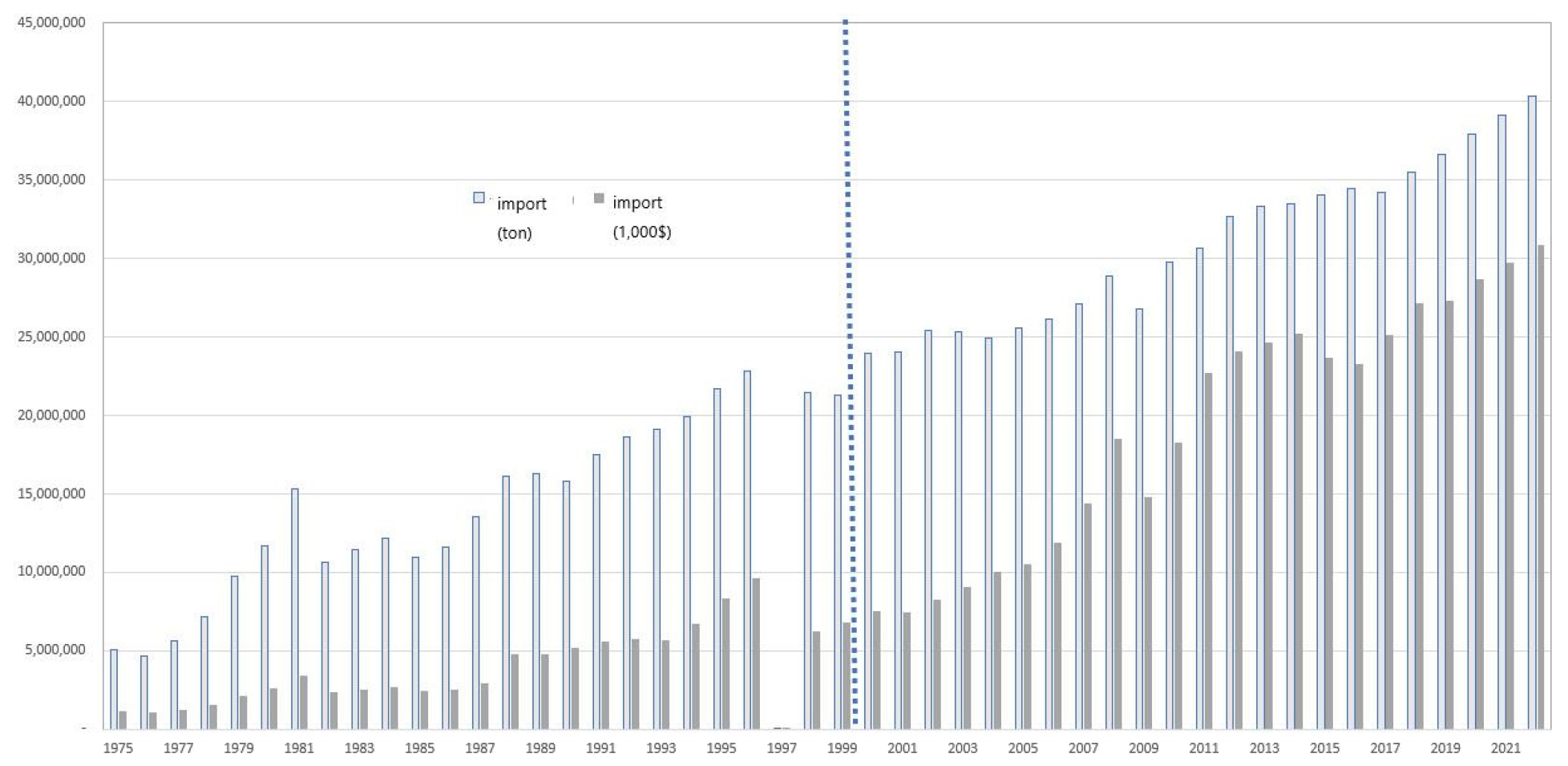
-
Research Article
- Design and Implementation of an Integrated Control System for Smart Agriculture in Open-Field Food Crops
- Chi-Yong An, Tae-An Kang, Hoejeong Jeong, You-Jin Park, Hongseok Lee, Jongsoo Ryu, Hyungjin Bae, Chulmin Song, Jinki Park
- Faced with multifaceted challenges such as climate change, an aging agricultural population, labor shortages, and declining arable land, the open-field cultivation of …
- Faced with multifaceted challenges such as climate change, an aging agricultural population, labor shortages, and declining arable land, the open-field cultivation of staple crops remains a crucial production base in Korea. However, it is highly vulnerable to external factors such as weather variability, pest outbreaks, and soil moisture fluctuations, necessitating precision management based on real-time data. Despite this need, current smart agriculture technologies have primarily evolved for greenhouse cultivation, and the development of integrated technologies and systems tailored to open-field environments remains limited. This study aims to address these limitations by designing and implementing a smart agriculture integrated control system optimized for open-field staple crop production. The system is built on a hybrid wireless communication infrastructure, including Wi-Fi, LTE, and LoRa, which enables real-time collection, transmission, and storage of data from diverse technological components such as weather, soil, moisture, pests, agricultural machinery, and water resources. Through an integrated dashboard, the platform provides visualization, automated control, alerts, and long-term data analysis. Core functionalities, including climate and soil sensor networks, autonomous agricultural machinery control, digital precision water management, and AI-based pest monitoring with drone-based control, were designed and integrated into an operational control interface to demonstrate the feasibility of data communication, monitoring, and remote control in open-field smart agriculture. Unlike a simple aggregation of individual technologies, the developed system operates as an interconnected, integrated platform, enabling data-driven automation and precision across all growth stages from sowing to harvest. The proposed platform has strong potential to serve as key infrastructure for future digital food security strategies and demonstrates substantial field applicability and scalability for open-field smart agriculture. - COLLAPSE
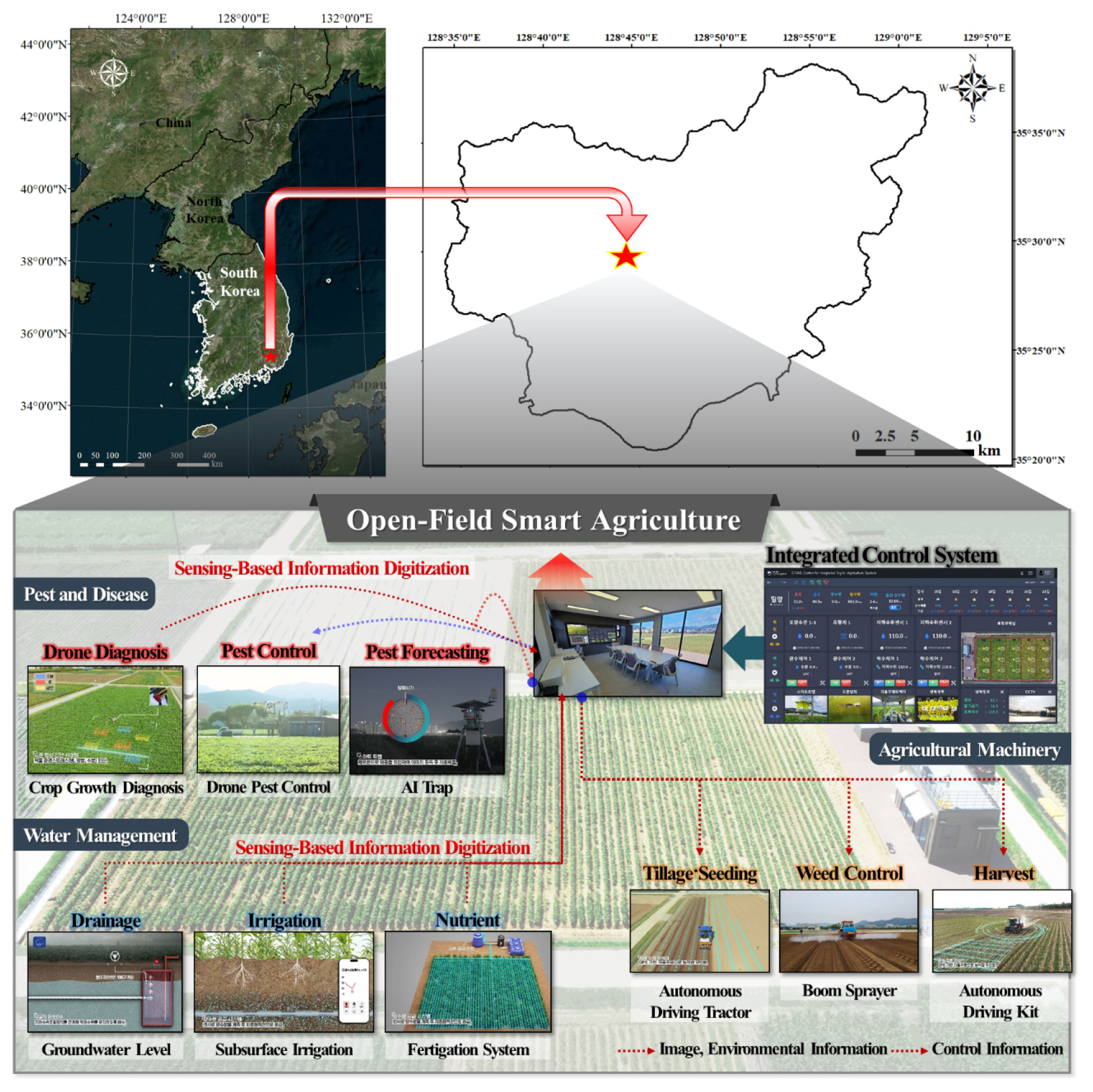
-
Research Article
- Development of Calorific Value Prediction Model Using Torrefied Biomass Elemental, Proximate and Chemical Composition
- Sunyong Park, Kwang Cheol Oh, Seok Jun Kim, Sunhwa Ryu, Dae Hyun Kim
- With increasing environmental degradation, biofuels such as biochar have emerged as viable alternatives to fossil fuels. The heating value of biofuels is …
- With increasing environmental degradation, biofuels such as biochar have emerged as viable alternatives to fossil fuels. The heating value of biofuels is a key parameter for assessing their efficiency, yet it is often lower than that of traditional fossil fuels. Direct measurement of heating value requires multiple analyses, consuming both time and resources. To address this, numerous predictive models based on various analytical approaches have been developed. This study constructed heating value prediction models using elemental analysis, proximate analysis, and chemical composition analysis, applying them to thermally treated herbaceous agricultural biomass (soybean pods, corncobs), woody agricultural biomass (pepper stems, grape pruning branches), and forestry biomass. A dataset of 66 samples was analyzed. Model performance was evaluated using the coefficient of determination (R2) and root mean square error (RMSE), with elemental analysis models achieving the highest accuracy (R2 = 0.9302 - 0.9650), followed by chemical composition (R2 = 0.8920 - 0.9082) and proximate analysis (R2 = 0.7882 - 0.9882). The optimal models were selected based on both statistical performance and agreement with previous literature. These equations can support rapid estimation of heating values, reducing the need for direct calorimetry. The findings have potential applications in industrial bioenergy production, agricultural residue management, and biomass-based energy policy planning. - COLLAPSE

-
Research Article
- Potential Impact of Pre-cropping with Rice Alternative Crops on the Flour Quality of Winter Wheat (Triticum aestivum L.) in Paddy Fields
- Seo Young Oh
- This study aimed to assess the quality improvement and baking applicability of winter wheat flour produced by pre-cropping with three rice alternative …
- This study aimed to assess the quality improvement and baking applicability of winter wheat flour produced by pre-cropping with three rice alternative crops (black soybean, sesame, and perilla) in the paddy fields of southern Korea. The lightness value (L*) and whiteness index (WI) of wheat flour from fields pre-cropped with rice alternative crops were lower than those from rice pre-cropped fields. Macro- and micro-nutrient contents of wheat flour were generally higher in wheat grown in fields pre-cropped with rice alternative crops than in wheat grown in rice pre-cropped fields. Crude protein and dry gluten contents of wheat flour were higher in wheat harvested from fields pre-cropped with rice alternative crops than from rice pre-cropped fields. In addition, total starch was higher in wheat harvested from fields pre-cropped with black soybean and perilla. Among mixograph parameters, water absorption was higher, while midline peak time was shorter, in wheat from fields pre-cropped with rice alternative crops. These results suggest that pre-cropping with rice alternative crops, such as black soybean, in crop rotation is expected to have a positive impact on flour quality of winter wheat. - COLLAPSE
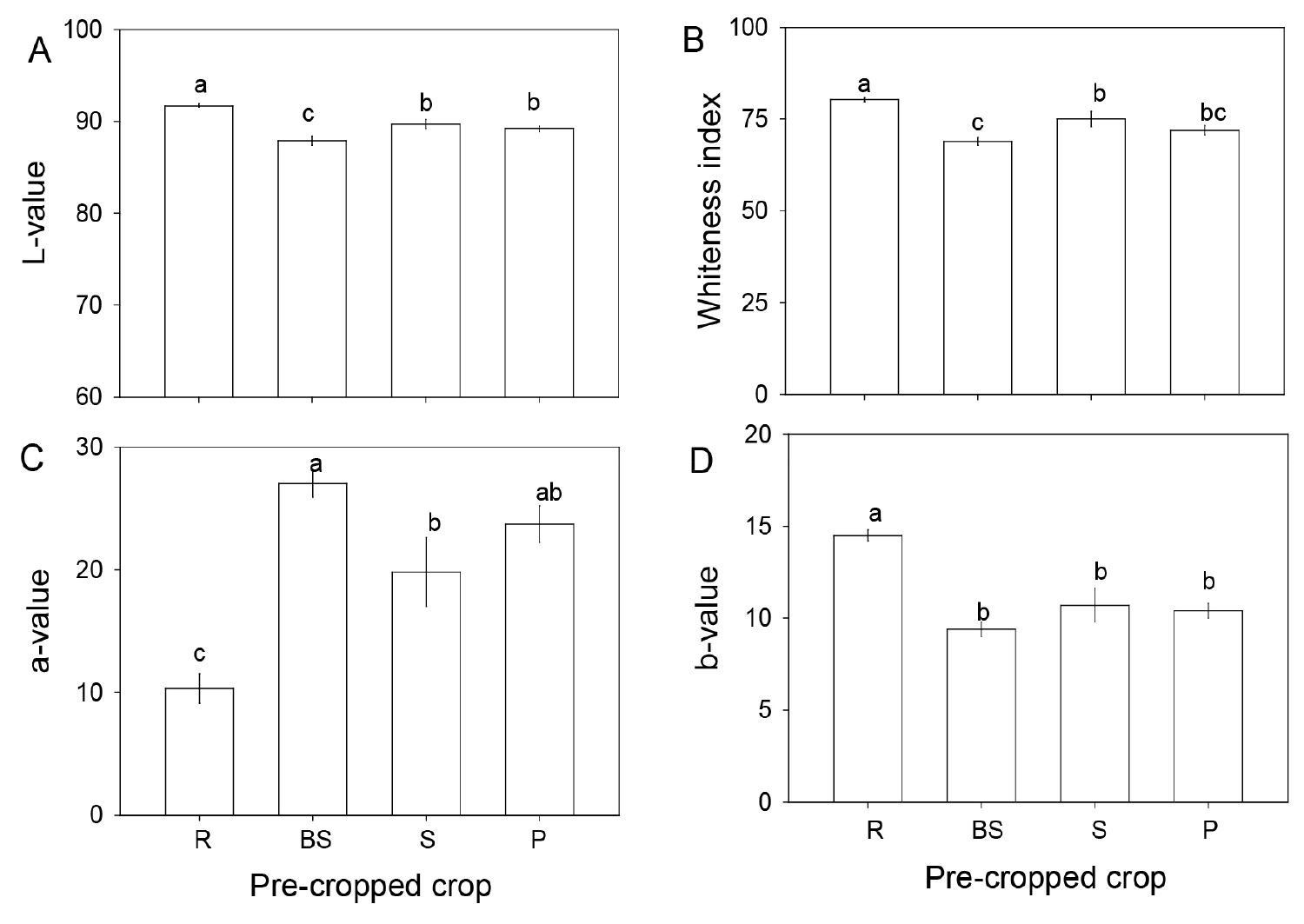
-
Notice
- Erratum to: Soil Parameter Estimation Technology based on Hydrological Connectivity to Predict Spatially Distributed Soil Moisture
- Seunghun Shin, Geunhyung Park, Seoro Lee, Yongchul Shin, Keunchang Jang, Jung-Hwa Chun, Jonggun Kim
-
Notice
- Erratum to: Investigation of 3D Food-Printing Materials Derived from Chickpea Cooking Water (Aquafaba)
- JooYoung Lee, Yeonggeol Hong, Kyoung-Je Jang
Journal Informaiton
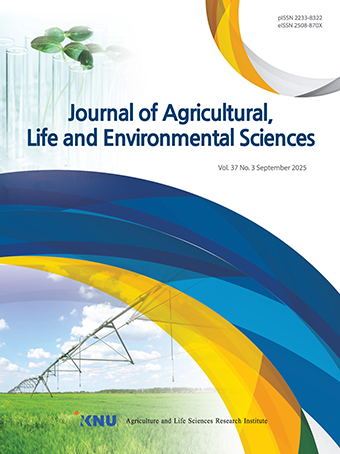 Journal of Agricultural, Life and Environmental Sciences
Journal of Agricultural, Life and Environmental Sciences
 Journal of Agricultural, Life and Environmental Sciences
Journal of Agricultural, Life and Environmental Sciences



